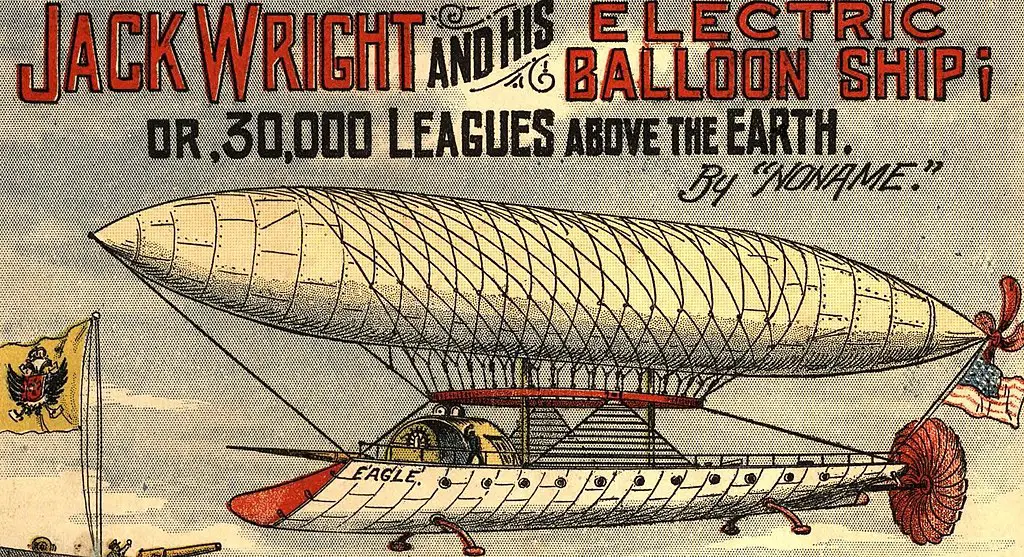A hoax is a deliberate falsification or fabrication designed to deceive for entertainment. Looking back at some of the tall tales and news of the past, Michigan is rich in its ability to make up some of the greatest urban legends, hoaxes, and scams in the United States.
Table of Contents
The History of Michigan Hoaxes
Michigan’s history is rich with stories that blend fact and fiction, creating a tapestry of intriguing tales and urban legends. From the mysterious Cardiff Giant to the Great Brewster Chair Hoax, these stories entertain and offer a unique glimpse into the past. As we delve into some of the most fascinating Michigan hoaxes and myths of the last century, prepare to be captivated by the tales that have woven themselves into the state’s cultural fabric.
What is the meaning of a Hoax?
A hoax is a deliberate deception made for personal gain or to damage another individual. The act of making falsehood appear truthful is known as disinformation, which can be used to mislead large numbers of people into believing something that isn’t true. Hoaxes are usually done for personal gain or to damage another individual, but not always. For example, some scams are created by media outlets to promote their brand.
Let’s review the Michigan hoaxes that took place or involved Michigan
The Chinese Restaurant Syndrome With MSG

Chinese food consistently ranks among the favorite ethnic foods in the U.S. year after year. Chinese restaurants in Detroit are considered some of the best in the US. This may be due to the high number of international travelers from Asia coming to Detroit in the automobile business.
Chinese Restaurant Syndrome is one myth that has been spread about Chinese eateries. This alleged condition was created due to anecdotal reports of pain following Chinese food consumption. The root cause has been identified as monosodium glutamate (MSG). The “Chinese Restaurant Syndrome” gained attention in the late 1960s and 1970s, leading to widespread misconceptions about MSG.
Over the last 17 years, research has failed to identify any objective evidence that goes along with the fleeting sensations that some people report after ingesting monosodium glutamate as part of an experiment. As a result, the validity of the phrase “Chinese Restaurant Syndrome” is up for debate.
The Cardiff Giant
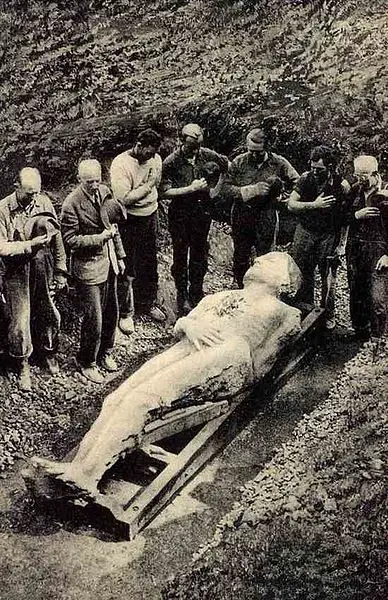
On a grey October day in 1869, workers were digging a well behind the barn of William C. “Stub” Newell in Cardiff, New York. They discovered a ten-foot-tall stone sculpture of a man. He was quickly dubbed the Cardiff Giant. The discovery spread fast, and thousands of people soon journeyed to the Cardiff farm to pay and see the colossus. This turned out to be one of the famous hoaxes involving Michigan.
A tobacconist from New York named George Hull invented the gigantic man. Genesis 6:4 claims that there were once giants who inhabited Earth. Hull, an atheist, disagreed with this statement during a Methodist revival service. Hull was frustrated by his inability to prevail in the debate and by the public’s gullibility, so he decided to use a false giant to demonstrate how easily he could deceive people. He worked with artisans and an agreeable farmer to pull off the vast hoax.
He saw its popularity, ability to generate income, and a steady stream of headlines. Circus showman P. T. Barnum offered $50,000 for the giant. Barnum was rebuffed on the sale, so he hired a man to secretly model the giant’s shape in wax and create a plaster replica. Cardiff Giant influenced similar hoaxes or public perceptions in Michigan.
You can see the PT Barnum version of the Cardiff Giant at Marvin’s Marvelous Mechanical Museum in Southfield, Michigan. The original stone sculpture is located Farmers’ Museum in Cooperstown, New York,
Henry Ford And The Protocols Of The Elders Of Zion

Henry Ford in 1919 – Hartsook, photographer., Public domain, via Wikimedia Commons
The most infamous and frequently read the antisemitic text of the contemporary era is The Protocols of the Elders of Zion. Even now, especially online, hoaxes and falsehoods about Jews are still being spread. People and organizations have exploited the Protocols for the same thing: to incite hatred against Jews.
Henry Ford bought The Dearborn Independent, the local paper, in 1918. After a year and a half, he started writing essays in which he said that, by the Protocols, America was the victim of a tremendous Jewish plot. The following 91 issues made up the series. Ford translated the pieces into at least 16 other languages and bundled them into four volumes named “The International Jew.” It was delivered to his extensive network of dealerships and subscribers, totaling half a million copies.
Henry Ford, one of the most well-known people in America, gave ideas legitimacy that may not have had much support otherwise. As a result, Ford and The International Jew received accolades from both Adolf Hitler and Joseph Goebbels, who would eventually lead the propaganda ministry for Nazi Germany.
Moose Island Hoax Of Isle Royale
A story about Isle Royale National Park has been around for years. The description states that: “Lake Superior is the world’s largest freshwater lake, and its largest island is Isle Royale, whose largest lake is called Siskiwit, whose largest island is called Ryan. Ryan Island is home to a seasonal pond called Moose Flats that, when flooded, contains its island—Moose Boulder. This makes it “the largest island in the largest lake on the largest island in the largest lake on the largest island in the largest lake in the world.”
A Mother and Son trekked out to the island to find this legendary spot. It wasn’t there. It’s a tongue twister, and the saying is cute and doesn’t hurt anyone, but unfortunately, the description isn’t accurate. It’s one of those hoaxes you kind of wish was true. If you want to see the exact spot of the Moose boulder, visit 48.0088°, -88.7720°.
Great Brewster Chair Hoax
One hoax close to home involved the Henry Ford Museum in Dearborn, Michigan. The Henry Ford Museum acquired a unique and extraordinary armchair from the 17th century in 1970. The original Brewster chair is tall and imposing, with baluster-turned legs, armrests, and spindles. It was believed to have belonged to Mayflower traveler and Plymouth “Elder” William Brewster. After 1830, when heirs gave the chair to a museum as a known original, Elder Brewster’s chair became a significant artifact.
Armand LaMontagne, a self-taught artist, recreated the Brewster chair from the 17th century in 1969 using his carpentry abilities. LaMontagne was meticulous in his attention to detail, using green oak that slightly warped as it dried and wooden pegs, a typical method used in the Colonial era, join the pieces together. As any wooden object that was to have endured many centuries would need to display significant wear, he is also supposed to have utilized a variety of ways to “age” the chair.
LaMontagne placed it in an antique shop in Maine where he hoped it would snag a high-end collector. It did. The chair exchanged hands and was sold to the Henry Ford Museum in 1970 for $9,000 as a Brewster Great Chair.
To its credit, Henry Ford continues to display the chair in its collection as an example of an antique forgery, and the museum loans it out for national exhibits on hoaxes, fakes, and forgeries.
Whales In Lake Michigan

This one leaves a few teachers a little red-faced. In 2002, Michigan Studies Weekly mistakenly reported that whales lived in the Great Lakes. With a readership of over 400 teachers, some educators relayed this misinformation to their students, and others questioned the report, which led to the paper’s publishing a retraction.
It turned out the newspaper was using the web as its source of information and cited a satirical website that offered whale watching on Lake Michigan. This is not one of those hoaxes that had the intent to deceive; however, it’s evidence that one must be careful of the online sources one uses.
Creepy Clown Hoax of 2016

There was a rash of police reports beginning in August of creepy clowns. The menacing figures would chase girls, peek in windows, and otherwise just look suspicious. Many of these “sightings were made-up hoaxes that were spread by social media. However, some thought the threat was real, and as a result, schools were locked down, police were called, and some of the clowns were picked up and jailed. It got so bad that McDonald’s halted public appearances of its Ronald McDonald clown.
The Great Mass Hysteria UFO Hoaxes Of 1897
As the 1800s drew to a close, the fascination with science and technology took hold of the American public’s imagination. Advances heavier than air machines were giving rise to the possibility of manned flight. In addition to often appearing in illustrations and cartoons of the day, UFOs, balloons, and dirigibles have long been a staple of popular fiction of the period. Examples include Jules Verne’s “A Voyage in a Balloon” and “Around the World in Eighty Days.”
In 1896 newspaper of the day reported sightings across the country. The descriptions were all similar. A cigar-shaped craft with a propellor in the rear and a box-like structure slung on the bottom. Reports trickled in from California, Texas, and Illinois. One historian noted that there were thousands of reports of airship sightings in Michigan.
The first successful (albeit brief) Zeppelin flight happened in 1900 in Germany.
University of Michigan’s Galileo Manuscript
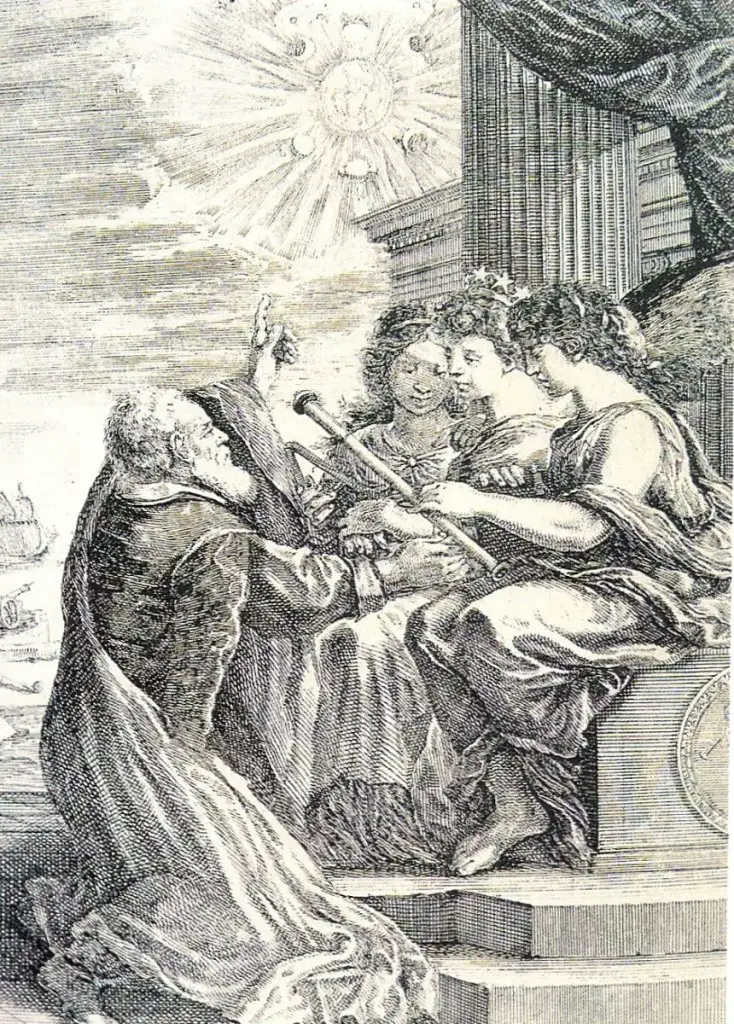
The manuscript, a one-page document purportedly written by Galileo himself, has been one of the highlights of the University of Michigan Library for nearly a century.
The letter that accompanied Galileo’s official gift of a freshly constructed telescope to the Doge of Venice on August 24, 1609, is found in its upper half. Draft notes documenting Galileo’s telescopic observations of Jupiter’s moons from January 7–15, 1610, are included in the lower part of the page.
The manuscript was bequeathed to the university in 1938 by a Detroit businessman and collector, Tracy McGregor. McGregor acquired the document as part of a larger library collection in 1934.
However, the documents turned out to be the handiwork of Tobia Nicotra, a well-known forger from Italy who was fined and sentenced to two years in jail for crafting fake Galileo documents in 1934. A researcher reviewing Nicotra’s work in Milan, Italy, alerted UofM of the phony document in 2022.
Bull Sharks In The Great Lakes

In 2019 podcaster personality Joe Rogan had a guest on his show, Forrest Galante, a wildlife conservationist, biologist, and television personality, who casually stated, “Do you know that they actually had documented bull sharks stuck in the Great Lakes?” Galante asked. “It’s pretty amazing. Sharks swimming a thousand miles from Louisiana up rivers and getting stuck in the Great Lakes.” Rogan replied, “Yes, I heard about that. That is nuts.”
The offhand and patently false remark worked its way into social media. An Instagram post entitled SHARKS FOUND IN US LAKES. LISTEN TO THIS generated over 145,000 likes and shares.
While the highly aggressive bull shark can swim in fresh water in rivers leading to the ocean, there has never been a shark of any type spotted or caught in the Great Lakes,
The Millennium Bug or Y2K Hoax

Best Buy, Public domain, via Wikimedia Commons
In the late 1990s, the IT consulting business was on a full-court press warning Fortune 500 companies about the impending doom that the end of the 1900s would bring to the computer industry. The chaos that would ensue was due to a simple programming style that has been used since the 1960s that expressed the value of the year with only two digits. Thus 1984 would simply be “84.”
As 1999 clicked into 2000, the consultants said that some older computers and mainframe systems would simply cease to function due to the confusion caused by the millennial change. Companies with significant IT investment freaked out, including all the automakers and suppliers in Detroit.
Task forces were formed, and computer SWAT teams would assess thousands of lines of code in search of this vulnerability. Millions of dollars were spent in remediation efforts, primarily of auditing code—a truly thankless endeavor.
When the clock struck midnight in 2000, you know what happened to all the computer systems? Not much. Italy, Russia, and South Korea were among the nations that still needed to do something to prepare for Y2K. They had no more technical issues than other nations, such as the United States, who invested millions of dollars in solving the problem.
Due to the lack of catastrophic results, many people dismissed the Y2K bug as a hoax or at least wishful thinking among the end-of-the-world cultists.
The Viking Artifacts Of Cheboygan

In 2017, rumors started to spread that a team of amateur archaeologists had found a cache of Viking relics close to Cheboygan’s village on Lake Huron’s shore. One hundred ninety-four artifacts in all, the majority made of different metals, including silver, iron, copper, and tin, were discovered on what could have been the location of an old Viking trade station near the Straits of Mackinac.
“Swords, axes… silver buttons and a balancing scale reportedly from the British Isles, hair combs and knife handles fashioned of walrus ivory and originating from Greenland or Iceland” were among the objects on display. The relics were delivered to the University of Michigan’s Department of Archaeology for additional examination. Researchers concluded that the area initially housed a Pre-Columbian commercial hub for Scandinavian explorers.
The story caught on like a match to gas and was copied and repeated all over the internet. However, many of those repeating the story should have mentioned that the original report came from the satire site Wordnewsdailyreport.com. The site’s motto is “Where facts don’t matter.”
Lake Michigan Striped Icebergs

Starting in 2008, photographs were posted on the internet showing icebergs with multi-colored striping allegedly taken in Lake Michigan. It seemed believable as there are certain conditions on the Great Lakes where blue ice forms due to algae in the water.
However, in this instance, Oyvind Tangen, a Norwegian seaman, captured the images while sailing on a research vessel around 1,700 miles south of Cape Town, South Africa, thus this photo tagged amoung Michigan hoaxes did not occur.
Robocalls To Black Voters Hoax

During the 2020 Presidential election, two Ohio men, Jacob Wohl, 24, and Jack Burkman, 56, hatched a scheme to call thousands of voters in urban areas to discourage them from taking part in mail-in voting. The pair targeted majority-Black Detroit and cities in at least four other states that if they voted by mail in the Nov. 3 election, they could be subject to arrest, debt collection, and forced vaccination. Crazy stuff
In October 2022, the two pleaded guilty in Cleveland to single felony counts of telecommunications fraud for having placed thousands of false robocalls in Ohio. During the trial, it was revealed that over 85,000 robocalls to predominantly Black neighborhoods in Ohio, Michigan, New York, Pennsylvania, and Illinois during the runup to the 2020 general election. This is one of the Michigan hoaxes that could have had serious political ramifications.
The University Of Michigan’s Teleporter
In April 2013, The University of Michigan College of Engineering released a video revealing that their researchers had created a teleportation machine. Materials Science Prof. Xavier Vlad indicated that the finding was an accident. However, he demonstrated how he could teleport a small key from one end of the ion planter to the other across the room.
The interesting twist of the story was the virial attraction the video experienced after it was quietly released on March 31. The Engineering videos typically receive about 400 views. This one has had over 153,000 views over the past nine years.
The Marquette Zombie Attack

In February 2013, the Marquette Police Department started receiving numerous calls regarding a warning issued via an Emergency Alert System. It turns out that an apparent hacker gained control of the alert system and began issuing a series of warnings about a potential zombie attack on the city.
AFP Stock Of 1922
Back in the 1920s, everyone was investing in the stock market. It was crazy. Detroit even had its stock exchange to buy and sell stock issues from all the new auto companies that were springing up around Detroit. On April 1st, 2022, a new stock with the symbol AFP appeared on the Detroit exchange. No one knows what the company issued to the stock or its actual worth. Rumors and speculation took hold, and some said it was for a new issue called “American Fire Protection.”
It didn’t matter that no one knew what it was for. Once the market opened, a price of $6 was soon trading, driving it to $12, then a wild drop to $2 with a steady rise to $8, where it stabilized. Inquiries to the Michigan Securities Commission revealed that the stock was not authorized and, therefore, illegal to trade on the exchange. Some brokers were left holding worthless stock and ate the loss. It turned out the exchange had been pranked, and the symbol stood for “All Fools Preferred.” Unfortunately, the identity of the prankster listed on the Detroit Exchange was never discovered.
The Pine River Petrified Baby
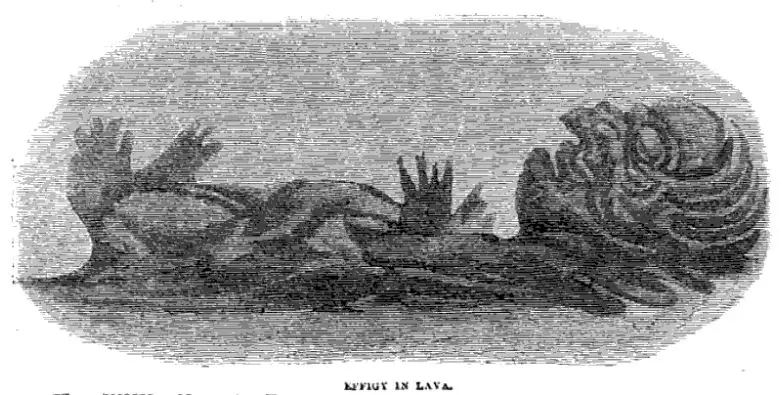
In October 1875, two hunters reported finding a small stone man embedded in a gravel bank alongside Pine River in Michigan. The day’s newspapers grabbed the story and called it the “petrified baby.” The oddity was about four feet tall with a vast, flat forehead. While folks were curious about Michigan’s find, some thought it was another edition of the Cardiff Giant hoax, which occurred only six years prior in 1869.
The neighsayers were right. The stone sculpture was the creation of William Ruddock of Thornton, Michigan. Ruddock was inspired by a picture of an Icelandic “effigy in lava” that appeared in an 1863 edition of Harper’s Magazine.
The New Auto Plant Spoof By the Durand Express

In April 1984, in a Michigan weekly called The Durand Express, Nissan intended to construct a car plant west of Durand City. Numerous workers would be employed at the new facility, providing greater earnings than the General Motors unit close by. Nissan would also give farmers $10,000 per acre for the land needed to construct the factory.
Many jobless auto employees who had heard the tale believed it and asked how they might apply for jobs at the factory. Finally, a Flint, Michigan-based reporter for a publication revealed the tale as a hoax.
The Michigan Dogman
One man wanted to make up a silly hoax as an April Fools joke and discovered a legend that goes back thousands of years. Steve Cook, a native of Traverse City and a radio producer, composed a song about the Legend of the Dogman in 1987 to be played for listeners on April 1st. However, Cook’s half-fiction, the half-fact song, was no joke to many listeners when it was broadcast. As listeners related tales of their encounters with a creature like Michigan’s Dogman, calls and letters started flooding in.
One account happened almost 100 years ago. When a group of wild canines approached Robert Fortney on the bank of the Muskegon River near Paris in the 1930s as he was fishing, Fortney shot them away with his 22-caliber hunting rifle, according to the Mansfield Ohio News-Journal.
“All the dogs scattered out of the way except a huge black dog with blue eyes. It stood and looked at him for two minutes. He was amazed by the fact this thing was standing there looking at him on two legs,” Cook said of Fortney’s account. “He claimed he never told anyone in his family or friends about it because he thought he was crazy.
The legendary creature is steeped in Native American folklore. The Odawa called the creature the Windigo. The creature is seen as a cannibalistic giant, a person who has been transformed into a monster by the consumption of human flesh.
The Blue Man Of Michigan’s Thumb
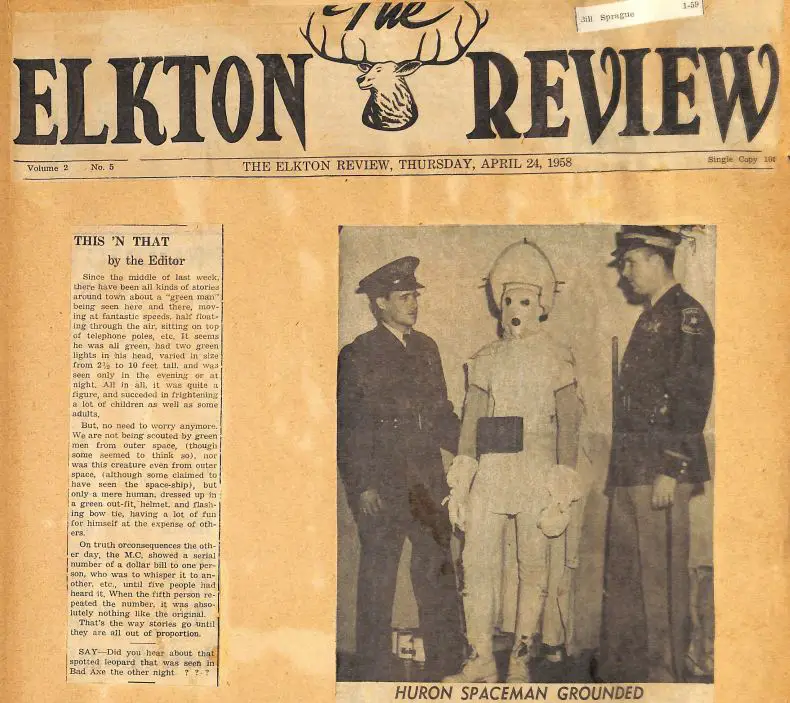
In the late 1950s, there was a fascination with Unidentified Flying Objects. (UFOs) Reports of sightings were commonplace. Three young men from Bad Axe took advantage of the hysteria and planned a simple, innocent hoax that would turn into a nationwide news story.
Donald Wiess, Jerry Sprague, and LeRoy Shultz were all in their 20s, laid off from work, and looking for something interesting to do in their hometown of Elkton. So they made a blue suit from long underwear, hip boots, and a huge helmet crafted with styrofoam and outfitted with lights and batteries. The outfit was painted, dyed a light blue, and topped off with a cape.
The trio set out and planted Jerry Sprague (because it was his underwear) at various spots along the highway, startling motorists in Huron County until state troopers caught them.
The story may have ended there, but newspapers around the country started picking up the story. It even appeared in the May 5th issue of Life Magazine. The trio even received fan mail.
Jerry Sprague is the last of the Blue Men from Elkton, who are still alive. He created a website called BLUE MAN OF THE THUMB with clippings and videos of the 1958 event.
Michigan Relics
Here in Michigan, the longest-running scam in American archaeology started. The first item was a clay cup that James Scotford “found” while drilling postholes close to Wyman in Montcalm County. The items he discovered were embellished with unidentified lettering and imagery that resembled those from Middle Eastern cultures. These “relics” were purported to be clay, stone, and copper artifacts discovered in lower Michigan’s center and southeast between 1890 and 1920. According to those who pulled them out of the earth, they were real. They are fakes, according to academics.
The public was captivated by the mystery surrounding Midwestern mounds in the late 1800s. Many believed that early inhabitants made them from Europe or the Near East. Even though earlier research revealed that Native Americans constructed the mounds, the Michigan Relics were regarded as evidence of this long-lost civilization.
Over the years, Scotford, his sons, and his son-in-law created hundreds of pipes and tablets out of clay, copper, slate, and stone. They buried them, frequently leaving the area open for plants and grasses to fill it in.
Daniel Soper was interested in these “finds,” which caught his eye. In Michigan, Soper was already well-known. In 1891, he held the position of Secretary of State. He started to publicize the “discoveries.” Important local figures would be invited to “digs” by Soper and Scotford. A digger would labor until he struck something as Soper, Scotford, and the visitors watched. The honoree was then instructed to reveal the thing. The appreciative “discoverer” often voluntarily signed a document attesting to the “artifact’s” veracity. Some seasoned archaeologists, clerics, mayors, and postmasters were duped.
Michigan was referred to as “the storm center of American archaeology,” The objects in question are part of the greatest hoax in archaeology history. Today, most of the relics of this hoax are housed at the Michigan History Museum in Lansing.
Final Thoughts About Michigan Hoaxes
Michigan’s landscape of hoaxes and urban legends serves not just as entertainment but as a mirror reflecting the state’s unique cultural and historical aspects. These stories, ranging from humorous fabrications to elaborate myths, reveal much about the human inclination for storytelling and the desire to believe in the extraordinary. They remind us that sometimes, the line between reality and fiction is blurred and delightfully crossed, enriching Michigan’s rich historical tapestry.
Related and Interesting Reading
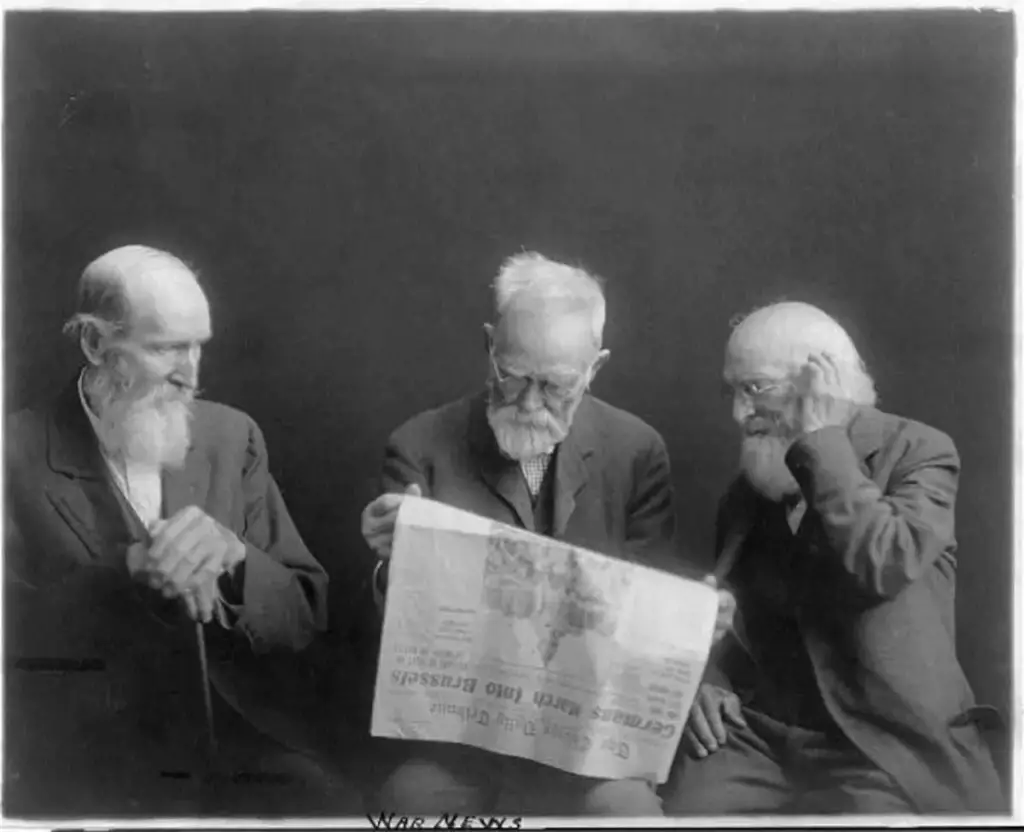
Discover Lexington MI: 15 Must-Do Activities in a Charming Lakeside Town
Discover 15 Enchanting Michigan Pioneer Log Cabins in Huron, Sanilac, and Tuscola Counties
Michigan Boat Tours – Experience A Real Taste of the Great Lakes With 35 of The Best
41 Delectable Delights – Famous Michigan Foods to Savor in the Mitten State


